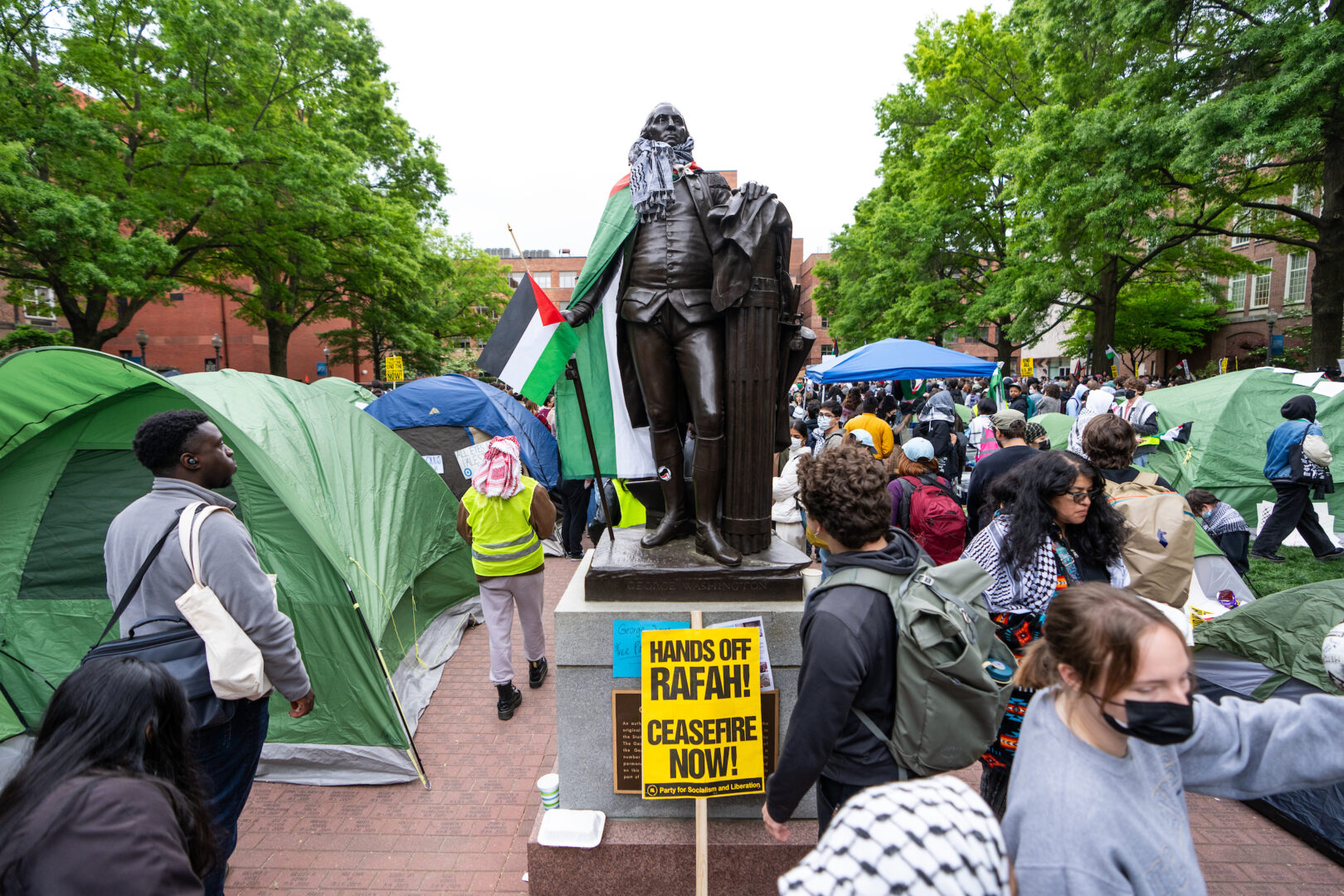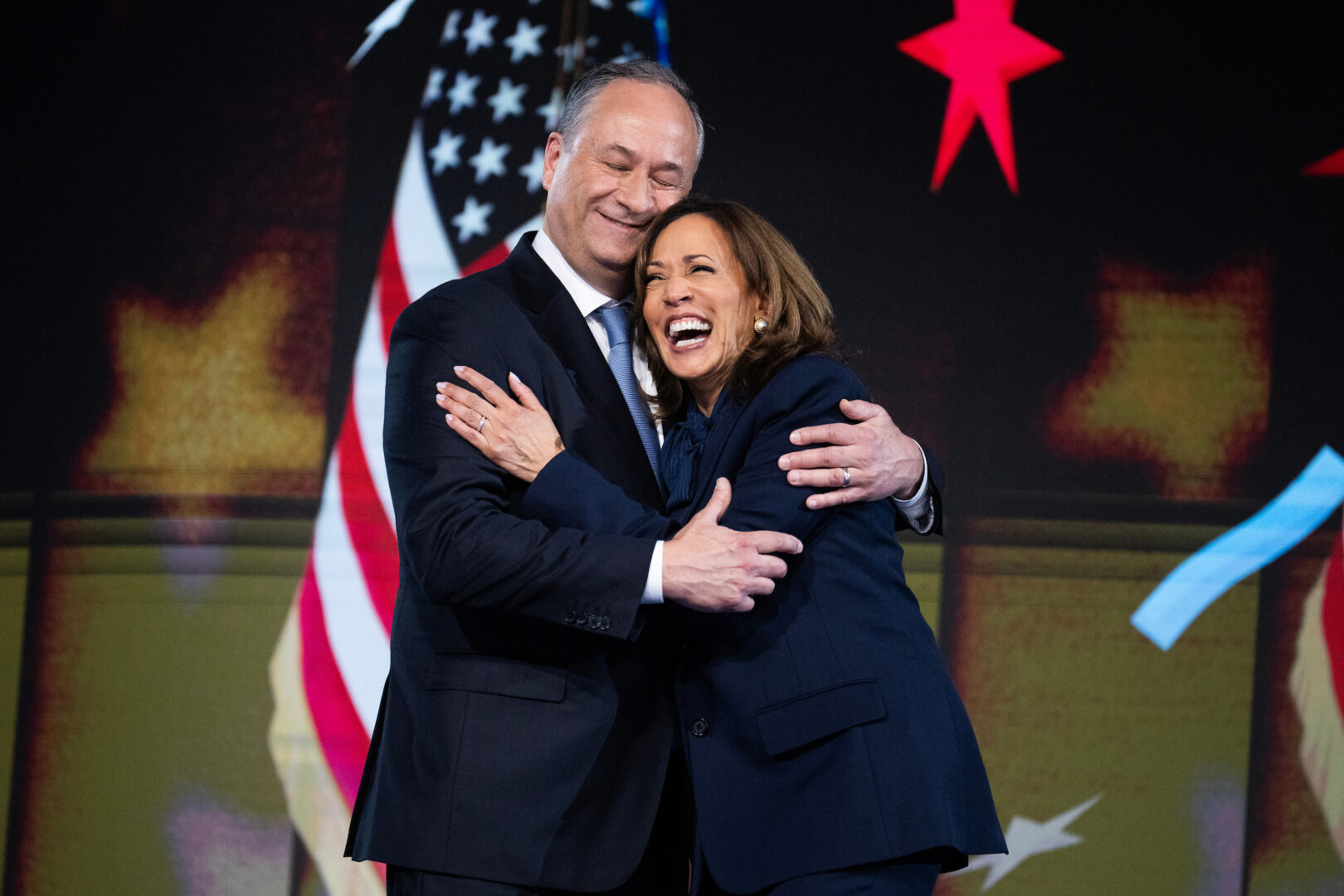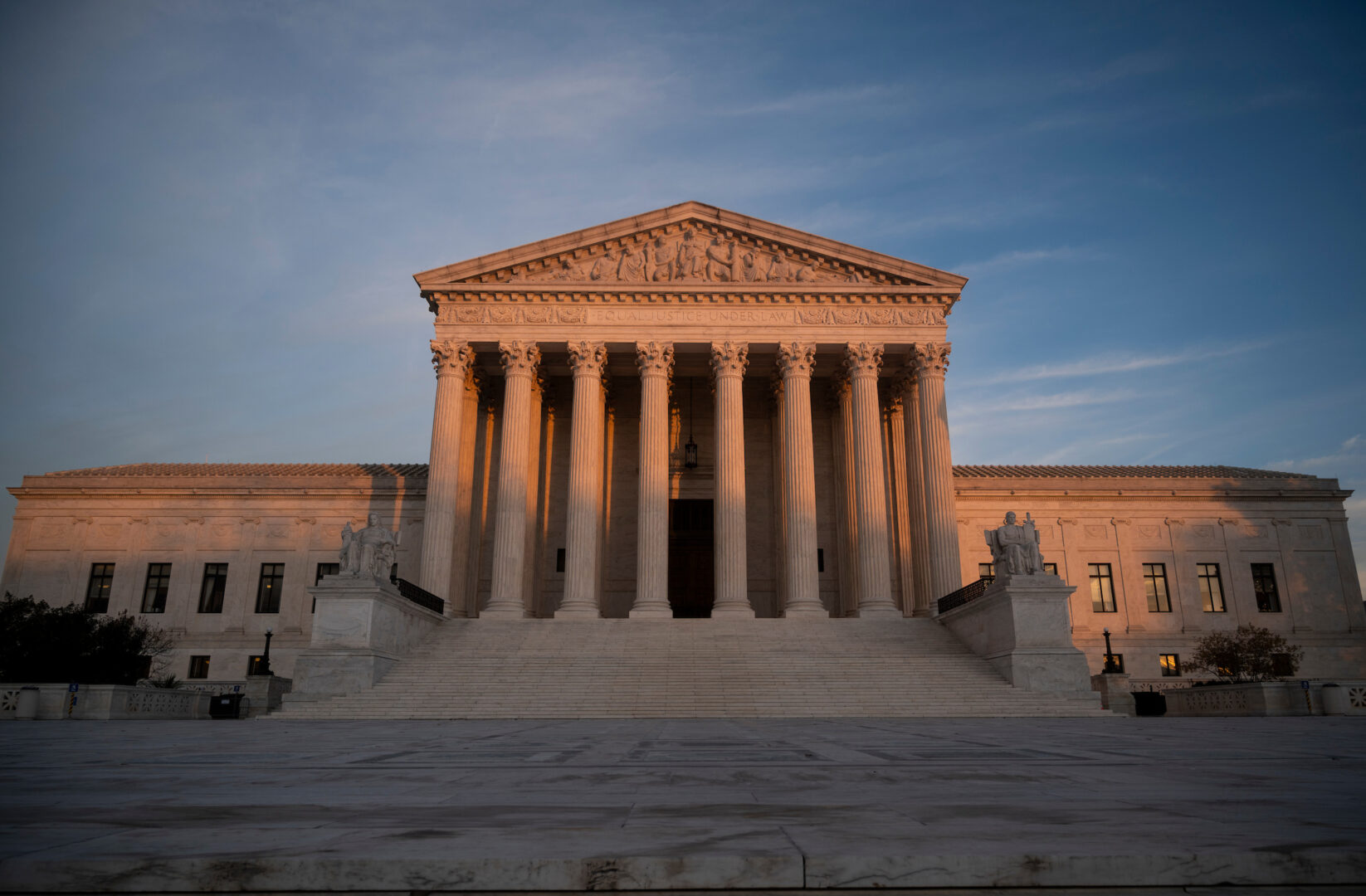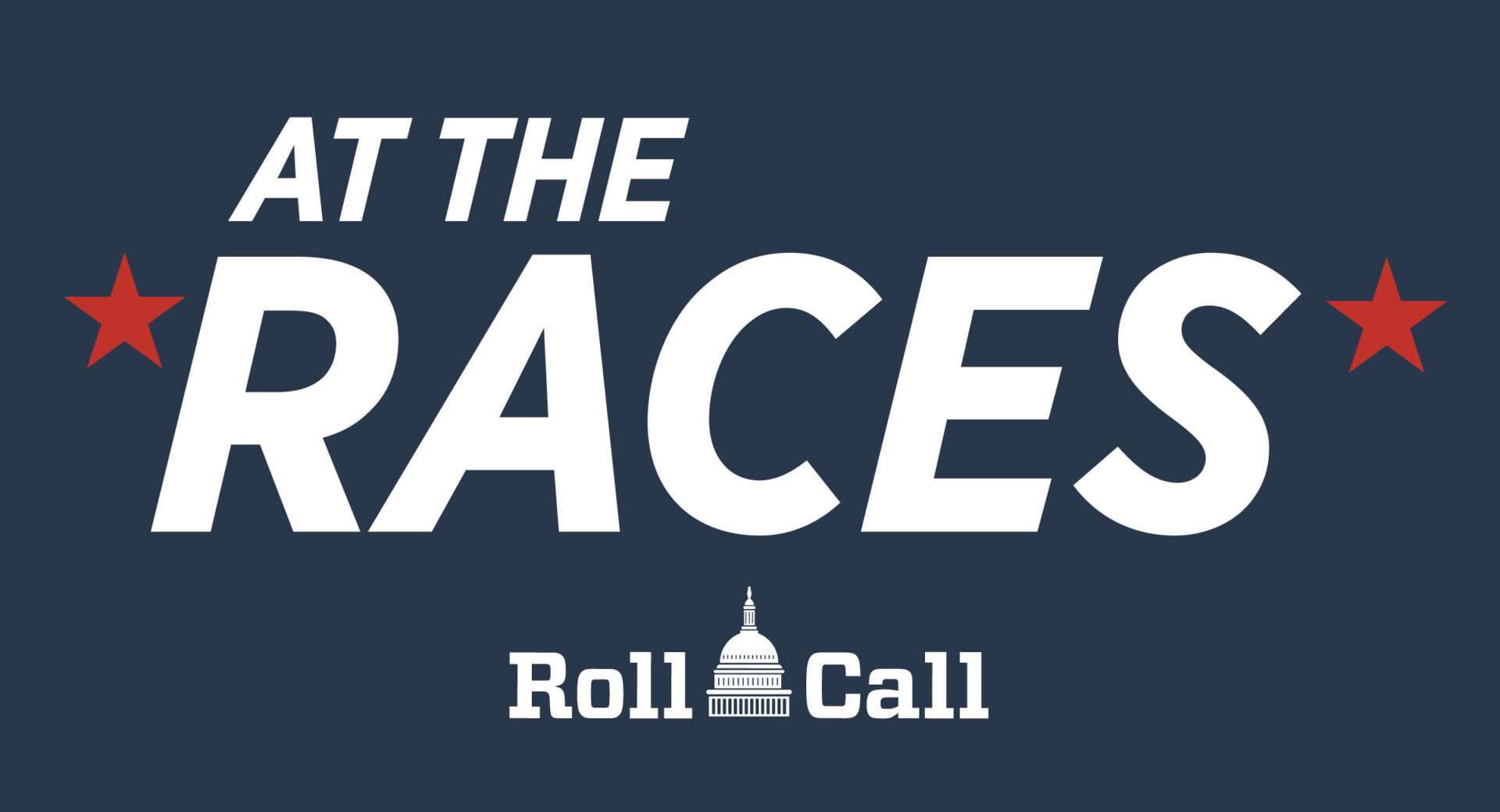How voters are responding to the latest campus protests
Colleges are taking a hit when it comes to their brand image, survey shows

People’s belief in the value of this country’s colleges and universities has always been an important element of the American dream. But over the past couple of decades, that respect and admiration has begun to erode, and new data shows that the image of colleges and universities has slipped even further.
Since Oct. 7, voters have watched protests erupting on campuses around the country, with graduation ceremonies canceled and videos emerging of Jewish students being harassed and even attacked. They’ve seen the American flag replaced with the Palestinian banner, heard students chanting slogans in support of terrorist organizations and seen violent clashes with law enforcement.
Voters also saw Ivy League presidents struggle to answer questions about growing campus antisemitism in testimony to the House Education and the Workforce Committee last December, after which two of them resigned. The testimony of Columbia University President Nemat “Minouche” Shafik in front of the same committee on April 17 sparked sit-ins and other disruptive activity at Columbia.
Columbia canceled some of its in-person classes and ultimately canceled its main graduation ceremony, as have other colleges. This was only a precursor to the campus takeovers dominating the news for the past three weeks, images that haven’t happened in a vacuum. At this point, according to The New York Times, more than 2,500 people have been arrested or detained at 54 colleges across the country since April 18.
New data from the latest Winning the Issues survey (April 27–29) explores how voters think colleges and universities have handled the protests. Among voters overall, only 19 percent said they approved of how colleges and universities have dealt with the demonstrations on campus, and 53 percent disapproved.
With independents, it was 12 percent approving with 57 percent disapproving, which was close to where Republicans were (16 percent/62 percent). Democrats were also disapproving, but on a smaller scale (29 percent/41 percent). Democrats 18 to 44 years old marginally approved (43 percent/35 percent).
Part of the reason for such low numbers was the inconsistency of the responses. Some colleges immediately had law enforcement deal with encampments and took academic action as well. Others negotiated with protesters and offered a wide variety of concessions. Overall, the academic leadership was all over the map and lacked a coherency in handling these protests.
The survey showed voters overall weren’t supportive of the protests, with only 23 percent of the country agreeing with the pro-Palestinian protests on college campuses, while 53 percent disagreed. Republicans (10 percent/69 percent) and independents (19 percent/54 percent) had similar viewpoints.
One interesting note: Democrats were split by age. Democrats 18-44 years old agreed with the protests (50 percent/29 percent), while those 45 and older disagreed (29 percent/42 percent).
But the reaction to how colleges handled the situation satisfied neither those agreeing nor those disagreeing. Voters who approved of the protests broke even on the handling of the protests, with 40 percent approving and 39 percent disapproving. Those who disapproved of the protests had a significantly higher disapproval (12 percent/71 percent).
Additionally, we asked voters whether the recent protests on college campuses were similar to prior protest movements like the ones dealing with Vietnam or civil rights, or whether they saw the current protests as much more threatening to other students. Forty-seven percent of the electorate thought they were more threatening, while 40 percent said they were similar.
But this question, too, saw differences by age. Of those age 45 and older, 52 percent said these recent protests were more threatening, while 35 percent said they were similar. Those 18-34 saw it the other way around, with 51 percent saying similar and 36 percent more threatening.
Over the past few years, higher education has become embroiled in a series of acrimonious debates over the college admissions scandal, the rising cost of a college education, the forgiveness of student loan debt, complaints of faculty progressivism and now charges of antisemitism that have chipped away at the foundations of higher education.
There was a time when research showed colleges and universities enjoyed a much more favorable image than today, at times having more than 70 percent of Americans sharing that view. But the Winning the Issues survey revealed that the brand image of colleges and universities has now slipped to 53 percent favorable and 34 percent unfavorable.
Less than half of Republicans and independents have a favorable view: Republicans are slightly negative at 42 percent favorable to 47 percent unfavorable, while independents are slightly positive at 46 percent favorable to 39 percent unfavorable.
Interestingly, the political and ideological center of the electorate, moderate independents, have a slightly less favorable view (43 percent/37 percent).
Democrats are the most positive at 70 percent favorable and 16 percent unfavorable. Not surprisingly, this was highly influenced by how voters thought colleges and universities handled the protests. Among the 19 percent who approved, 83 percent were favorable and 12 percent were unfavorable. Among the 53 percent who disapproved, 37 percent were favorable and 53 percent were unfavorable.
Ivy League universities were hit harder, having an overall negative favorable/unfavorable (38 percent/41 percent). Both Republicans (29 percent/53 percent) and independents (32 percent/45 percent) had significantly negative views of these elite schools.
Democrats were more favorable, but with just a bare majority having that view (50 percent/26 percent). Another side note: Voters who had an unfavorable view of both Joe Biden and Donald Trump also had a very unfavorable view of Ivy League universities (31 percent/51 percent).
Like colleges and universities overall, the views of Ivy League universities were influenced by how voters thought the protests were handled. Among those who approved, 65 percent were favorable and 20 percent were unfavorable. Among those who disapproved, 25 percent were favorable and 61 percent were unfavorable.
To some, especially current politicians, a favorable over 50 percent might seem like more than enough. But for an institution trying to manage state and federal funding issues, and work with elected officials whose constituents disapprove of the protests and how they were handled, it spells trouble ahead.
David Winston is the president of The Winston Group and a longtime adviser to congressional Republicans. He previously served as the director of planning for Speaker Newt Gingrich. He advises Fortune 100 companies, foundations and nonprofit organizations on strategic planning and public policy issues, as well as serving as an election analyst for CBS News.





